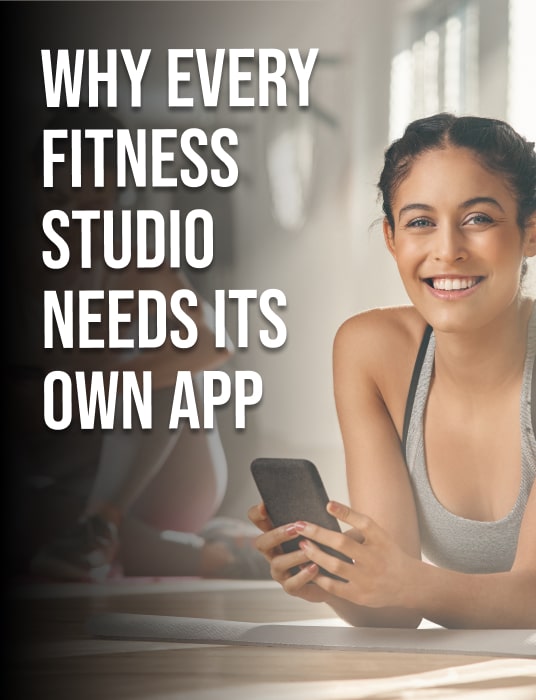Are You Earning Up to Your Potential?
Most personal trainers are undervaluing their time and skills. Our Personal trainer Revenue Calculator helps you find out what you should be making, and how to get there.
No guesswork. Just real numbers.
.jpg)
Are you a fitness enthusiast with a burning passion to turn your love for fitness into a thriving, successful business move? Whether you're a certified trainer or just leaped the fitness cosmos, building your client base is a crucial step toward success. In this guide, we'll walk you through practical steps to get more clients to kickstart your fitness business and some insightful tips and strategies for onboarding your first client.
Understanding Your Niche

- Define your niche: Identify your specialization, product, or service, be it weight loss, strength training services, or specialized fitness programs.
- Research your service and target market and audience: Understand your potential clients' demographics, preferences, and pain points.
💪 Got an idea for a brand? Let's bring it to life.
Launch your own fitness app with FitBudd in minutes!

💪 Got your brand name? Let’s bring it to life.
Launch your own fitness app with FitBudd in minutes!


88% trainers worldwide gave us 5 stars
Transform your fitness business with the power of your branded app on iOS and Android.
Try for FREECreating a Strong Online Presence
In the digital age, establishing a robust online and social media presence is paramount for the success of any fitness business. This involves strategically using online platforms to showcase your product or service and expertise, engage with potential leads, and ultimately attract clients. Here's how you can achieve a strong online presence:
1. Active Social Media Engagement:
- Platform Selection: Choose social media platforms that align with your target audience. Instagram and Facebook are popular choices for fitness professionals.
- Consistent Posting: Regularly share content that reflects your fitness philosophy. This could include workout videos, motivational quotes, and glimpses into your own fitness journey.
- Engage with Your Audience: Respond to comments and direct messages, and engage with your followers. Building a community fosters trust and loyalty.
Also read: Using Social Media To Scale Your Fitness Business [Free Social Media Calendar]
2. Focus on Consistent Content Sharing:
- Value-Driven Content: Share content that provides value to your audience. This could be in the form of fitness tips, nutritional advice, or answering common fitness-related questions.
- Diverse Content Marketing Formats: Experiment with different content formats after some market research, such as images, videos, and infographics, to keep your audience engaged.
- Content Calendar: Plan your content in advance to maintain a consistent posting schedule.
A strong online presence establishes your credibility as a fitness professional and allows you to connect with a broader audience. It serves as a virtual storefront where potential and current clients can learn about your expertise, training style, and the results you've achieved with others. By actively participating in online conversations and consistently providing valuable content, for example, you can position yourself as a go-to resource in the fitness community, attracting clients and opportunities to grow your business further.
Personalized Branding
Personalized branding is crafting a unique and memorable identity for your fitness business that reflects your values, style, and overall message. It goes beyond just having a logo; it encompasses every aspect of your own business ideas and how you present yourself to the world. Here's a closer look at the elements involved in personalized branding for fitness professionals:
Craft a Memorable Logo:
- Simplicity and Recognition: Design a logo that is simple yet memorable. It should be easily recognizable and resonate with your target audience.
- Color and Font Choices: Choose colors and fonts that align with the tone of your brand. Consistency in these elements fosters brand recognition.
Choose a Unique Brand Name:
- Reflect Your Philosophy: Your brand name should convey your fitness philosophy and the unique approach you bring to training.
- Ease of Recall: Opt for a name that is easy to remember. This makes potential clients more likely to recall and search for your services.
Consistent Visual Elements:
- Uniformity Across Platforms: Maintain visual consistency across your website, social media profiles, and any promotional materials. This reinforces a cohesive brand image.
- Professional Imagery: Use high-quality images that represent the professionalism and authenticity of your brand.
Brand Messaging:
- Clear Communication: Clearly articulate your brand message. This includes your mission, values, and the transformational journey you offer to clients.
- Tailored Language: Use language that resonates with your target audience. Whether it's motivational, educational, or a mix of both, ensure it aligns with your brand voice.
Brand Personality:
- Humanize Your Brand: Inject your personality into your brand. Let your authenticity shine through, fostering a deeper connection with your audience.
- Storytelling: Share your fitness journey, successes, and challenges. Authentic storytelling creates a relatable brand narrative.
Client Testimonials and Success Stories

Client testimonials and success stories are powerful tools in building credibility, trust, loyal customers, and a positive reputation for your fitness business. These narratives showcase real experiences and outcomes, offering potential customers a glimpse into the transformative journey they can embark on with your guidance. Here's a breakdown of how client testimonials, online reviews, and success stories can elevate your fitness business:
Encourage Client Testimonials:
- Request Feedback: Actively seek feedback from satisfied customers. A simple request for testimonials after a successful training session or program can yield valuable insights.
- Diverse Testimonials: Aim for various testimonials covering different aspects such as personalized training, program effectiveness, and the overall experience of working with you.
Before-and-After Transformations:
- Visual Impact: Showcase visual representations of client progress through before-and-after photos or videos. The visual impact is compelling evidence of the effectiveness of your training programs.
- Include Personal Narratives: Accompany transformation visuals with personal narratives. Allow customers to share their struggles, achievements, and your fitness guidance's role in their success.
Share on Website and Social Media:
- Strategic Placement: Feature testimonials prominently on your website's homepage or dedicated testimonial page. Share snippets on social media to reach a broader audience.
- Consistent Updates: Regularly update testimonials to reflect ongoing success stories. This demonstrates that your fitness programs consistently deliver results.
Builds Trust and Relatability:
- Third-Party Endorsement: Testimonials act as third-party endorsements, building trust with potential clients who may be on the fence.
- Relatable Experiences: Prospective customers can relate to the experiences of others, making them more likely to trust your services and commit to their fitness journey.
Highlight Specific Achievements:
- Fitness Milestones: Showcase testimonials highlighting specific fitness achievements, such as weight loss, muscle gain, or improved endurance. This demonstrates the breadth of your expertise.
- Emotional Impact: Include testimonials that touch on the emotional impact of your training, such as increased confidence, mental well-being, or lifestyle improvements.
Use in Marketing Collateral:
- Brochures and Flyers: Incorporate client testimonials, such as brochures and flyers, into your marketing collateral. Tangible materials featuring real success stories can leave a lasting impression.
- Online Advertisements: Utilize testimonials in online advertisements to enhance the effectiveness of your digital marketing efforts.
Effective Networking to Reach Potential Clients

Effective networking is a strategic approach to building and nurturing relationships within the fitness industry and beyond. It involves connecting with individuals and organizations to create mutually beneficial opportunities for growth, collaboration, and support for successful small businesses everywhere. Here's a closer look at the elements involved in the most effective ways of networking for fitness professionals:
Collaborate with Local Businesses:
- Identify Potential Partners: Seek out local gyms, health food stores, wellness centers, or other businesses that align with your fitness philosophy.
- Proposal for Collaboration: Approach potential partners with a clear proposal for collaboration, such as joint events, cross-promotions, or shared resources.
Online Networking Groups:
- Join Relevant Communities: Engage with fitness-related online communities, forums, and social media groups. These platforms provide opportunities to connect with potential customers, fellow trainers, and industry influencers.
- Contribute Valuable Content: Share your expertise by contributing valuable content, participating in discussions, and offering support to others.
Attend Fitness Events and Conferences:
- Stay Informed: Attend local and industry-specific events to stay informed about the latest trends, research, and opportunities.
- Network with Peers: Use conference networking sessions to connect with peers, influencers, and potential collaborators.
Managing Finances

Managing finances is critical to running a successful fitness business, ensuring financial stability, and laying the foundation for sustainable business growth. Effective financial management involves several key practices and considerations for fitness professionals with a small business:
Set Clear Pricing:
- Transparent Fee Structure: Clearly outline your pricing structure for various services. This transparency builds trust with clients and helps them understand the value they receive.
- Consider Introductory Packages: Offer introductory packages or promotions to attract new clients. This can be a compelling incentive for individuals exploring your services for the first time.
Simple Financial Tracking:
- Organized Spreadsheets: Use easy-to-understand spreadsheets to track income, expenses, and profits. Keep detailed records to facilitate accurate financial assessments.
- Regular Review: Schedule regular reviews of your financial records to identify trends, assess the success of different services, and make informed business decisions.
Tax Planning:
- Understand Tax Obligations: Familiarize yourself with tax obligations for fitness professionals. This includes income tax, business expenses, and any deductions applicable to your specific situation.
- Consult with a Professional: Consider consulting with a tax professional to ensure compliance with tax regulations and to maximize available deductions.
Client Payment Systems:
- Efficient Payment Methods: Implement efficient and secure payment methods for client transactions. This could include online payment platforms or a streamlined invoicing system.
- Automated Billing: Consider automated billing systems to ensure timely and consistent payments, reducing administrative overhead.
Customer Relationship Management (CRM) in Fitness Business
Customer Relationship Management (CRM) plays a pivotal role in the success of a fitness business, fostering strong connections with clients and potential new customers, enhancing their experience, and ultimately driving business relationship growth. Here's a closer look at the significance of CRM for fitness professionals:
Client Communication:
- Personalized Communication: Utilize CRM tools to personalize your communication with customers. Address them by name and tailor your messages to their fitness goals and preferences.
- Regular Updates: Keep clients informed about upcoming sessions, promotions, and relevant fitness tips through regular updates. Consistent communication from your customer service team reinforces your commitment to their fitness journey.
Appointment Scheduling:
- Efficient Scheduling: Implement excellent customer service software that includes appointment scheduling features. This allows customers to easily book sessions, reschedule, or cancel, streamlining the overall process.
- Automated Reminders: Set up automated reminders for upcoming sessions, reducing the likelihood of missed appointments and enhancing overall client satisfaction for a small business.
Customer Feedback:
- Feedback Collection: Implement mechanisms within your CRM to collect client feedback regularly. This can include post-session surveys or open communication channels for customers to share their thoughts.
- Responsive Action: Act on client feedback promptly. Client input is invaluable, whether it's adjusting training plans, addressing concerns, or incorporating positive feedback into your marketing materials. Keeping customers satisfied also encourages repeat business.
Conclusion
Building a client and customer base from scratch may seem daunting, but it's achievable with dedication and strategic planning. Keep the passion alive, stay connected with your audience, get new leads, and, most importantly, provide exceptional value to your customer base of clients and target customers. Remember, your success begins with that first step – onboarding your first client. Ready to take the plunge? Start your fitness journey today!
Frequently Asked Questions

Ultimate Marketing Guide for Fitness Trainers
Boost your business growth with these tried and tested marketing strategies. Free for you to download.
Download Now
Templates
These functional templates have the power to make any fitness trainer's life easier.
Subscribe To
Our Blog




























